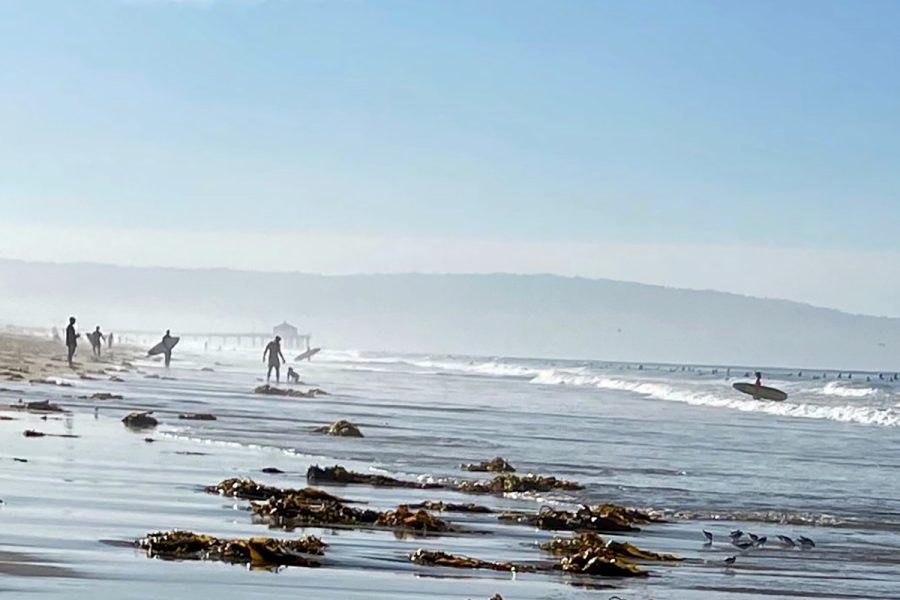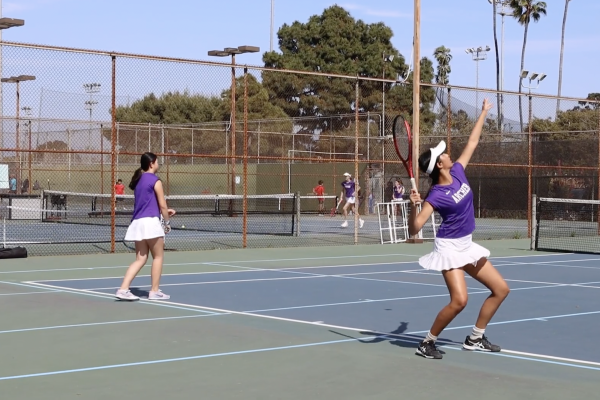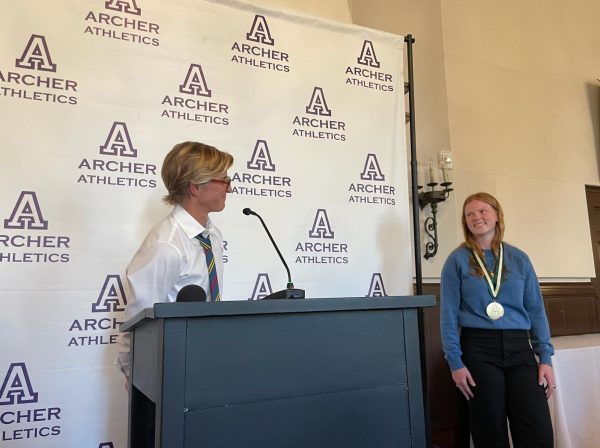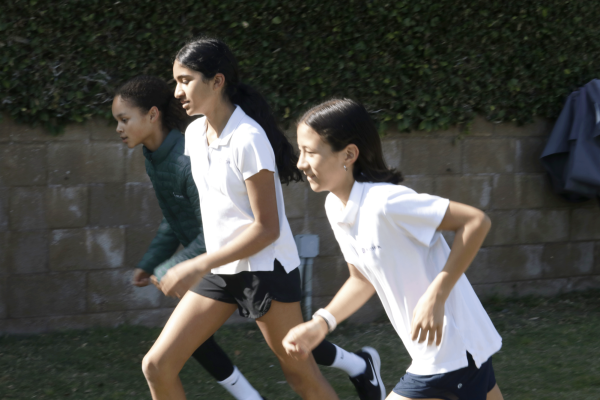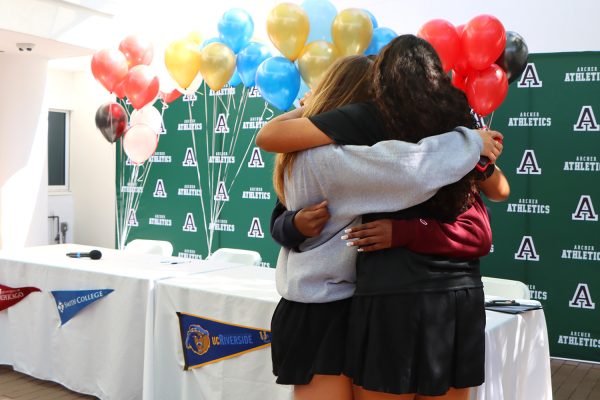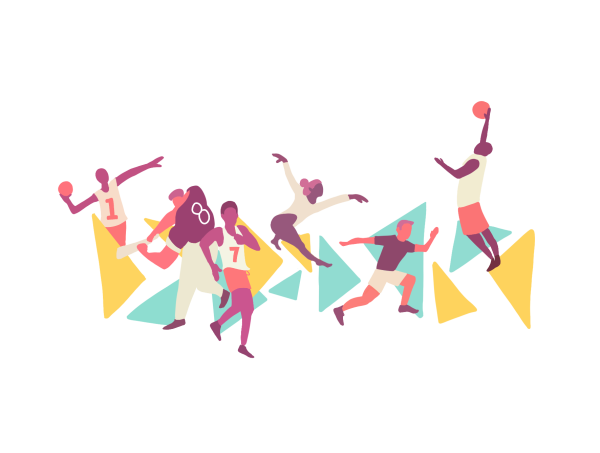Archer creates first surf team with Loyola High School: plans to compete, gain new members
Photo credit: Kim Smith
Team members prepare to surf during a Sunday morning practice. Archer’s first surf team practices at a variety of different beaches throughout Los Angeles, Malibu and Ventura County.
December 15, 2022
Junior Sophia Bratman is “not a morning person.” However, she dives into the Pacific Ocean two Sundays per month at 7 a.m. to participate in Archer’s first surf team.
The team, created in collaboration with Loyola High School, is coached by Athletic Director Kim Smith and teacher Mark Forte as well as coaches Pietro Martini, Kevin Kwok and Scott Rosenzweig who all work at Loyola High School. The Loyola surf team has 10 years of competition experience. Smith reached out to the Loyola team to create opportunities for Archer students who want to surf.
Junior Sophia Bratman said having a co-ed team is benefitting Archer students’ social wellbeing.
“It’s important to have connections outside of school, especially with guys, being at an all-girls school,” Bratman said. “Having relationships with different people is really important. It’s another social world [of] all these other friends that you don’t equate to work.”
The team has had one practice, and competitions span throughout fall and winter. Forte said that from the team’s infancy, it has had to act with adaptability.
“Surfing is not a static playing field,” Forte said. “It’s not like we can say, ‘tomorrow morning at 7 a.m we’re going to be on the sport court.’ The sport court’s always there, and it’s always in the same condition. For us, it has to do with the surf conditions, the tide, the wind [and] the weather … It takes a lot of coordinating.”
At competitions, surfers have the choice of longboarding, shortboarding or boogie boarding. They individually compete in rounds which are comprised of heats. In a heat, five judges can score any number of waves. However, only the two best scores for each surfer are accounted for, as they make up each surfer’s heat total. Scores for individual waves range from 0.0-10., with 0-1.9 being poor and 8.0-10.0 being excellent.
Despite the independence this creates, Bratman said the team still maintains a sense of community.
“It’s such a supportive group of people who say ‘You got this, you’re going to get this one, keep going,’ Bratman said. “I feel it’s them trying to project and say ‘I’m here for you’ and then hoping you say that back and having that overall support throughout the team.”
Bratman said the coaches also contribute to the team’s supportive atmosphere through positive and constructive feedback. Among the team’s Archer students, there are competing and non-competing surfers. Dakota Tooley (’26), who does not plan to participate in competitions, said she appreciates surfing for its “rejuvenating nature.”
“It’s refreshing, and you can be crazy,” Tooley said. “You can fall off your board and still have a smile on your face. It’s a fun way to exercise and still continue to connect.”
Like Tooley, Forte also found that surfing fostered connection. In particular, he said the sport fosters connection to the natural world.
“You’re fully immersed in one of the most amazing natural environments so there’s never a session when you don’t get back on the beach and feel better than you did before you went out,” Forte said. “I can’t say enough good things about it.”
Coach Martini primarily focuses on its administrative needs. He said the team’s location makes surfing particularly relevant and applicable to one’s life.
“I see it as a great natural resource we have here in LA,” Martini said. “Not everybody knows how to surf because it’s not as simple of a sport as one would think … If you grew up in Southern California … surfing is a great sport that you probably use for life. There’s guys and women in the water in their 60s and 70s, so that’s many decades that you can surf.”
As the cost of boards, lessons, wetsuits, and more can make surfing an expensive sport, Martini said it is beneficial for the team to expand in membership to promote inclusion in an environment that should be equitable.
“I don’t think we should delineate … because everybody has a right to enjoy nature,” Martini said. “It’s not volleyball where we build the court. The ocean’s everybody’s playground so why shouldn’t everybody enjoy it equally?”



